Is Spinach a Performance Enhancing Food? On the Role of Dietary Nitrates as Ergogenic Aids
Do you remember Popeye the Sailor Man and the secret behind his super-human strength?
Before punching the bad guys in the face, he used to gulp down a can full of spinach.
And, yes, I'm aspiring to write quite seriously about a cartoon.
Does it mean that vegans are right and that therefore we should all ditch animal protein and replace it with vegetable sources of incomplete chains of amino acids? Clearly not, and that would be a misinterpretation.
The right answer behind Popeye's physical performance is this: nitrates.

This article was originally posted on Naturally Strong.
A science-based blog where you can find plenty of whole-food based recipes for fueling your physical performance!
What Are Nitrates?
Nitrates are anions (negative ions) which, once ingested, provide a plethora of significant benefits to the human body.
They're decomposed into nitrites by the action of the bacteria contained in the saliva. These littler molecules then function as "raw material" for producing nitric oxide (NO) upon further redox.[1][2][3]
Circulating nitric oxide is associated with: [4][5][6][7][8][9][10][11]
- better energy output
- better aerobic resistance
- improved blood flow
- improved muscle recovery
Needless to say, more ATP, more available energy![12]
Which Foods Contain Nitrates?
Unfortunately, it is impossible to find nitrates in a supplement form because of the regulation against sodium nitrate.Therefore, the only possible way to introduce more nitrates in your organism -even if it is still possible to enhance circulating NO trough citrulline supplementation [13]- is by eating more nitrate-rich whole food, green vegetables in particular.
The most used veggies which provide an appreciable amount of nitrates are spinach and beetroot (juice, in particular, is the preferred source in the athletic context) [14][15].
However, there are two issues with these sources:
Spinach
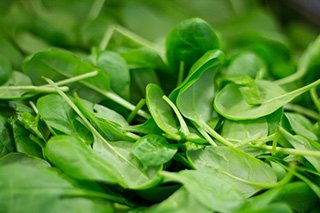
Spinach is also rich in oxalates: anti-nutrients that bind with minerals like magnesium, calcium, and iron preventing their absorption.
In particular, when oxalates bind with calcium, the resulting calcium oxalate forms insoluble crystals that are the main reasons behind the formation of kidney stones. For preventing
To prevent this risk, when you consume spinach for their nitrate content it is advisable to cook and drain them for removing the oxalate content. Nitrates, fortunately, aren't lost after the cooking process. In this condition, even the vitamins and minerals are more available.
Beetroots
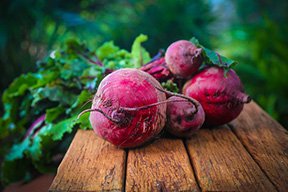
Beetroots have a high net carbohydrate content, making the juice solution unpractical for those fitness enthusiasts who are following a low-carb diet such as the ketogenic diet.
Arugula

Arugula: 100 grams of this leafy vegetable have an outstanding content of 332,3 mg of dietary nitrates with a minimal amount of oxalates (7.1 mg). Great source of Vitamin K as well and a net carb content of 2.1 grams.
Turnip Greens

Turnip Greens: my favorite source of dietary nitrates, are commonly used in the Italian cuisine. 100 grams contain 284,5 mg of nitrates and just 50 mg of oxalates. Usually, they are served cooked. Therefore it's easy to remove that little trace of oxalates.
On top of the nitrate content, turnip greens are literally a goldmine ofvitamin K, A and copper. But the best thing is that 100 grams of cooked and drained turnip greens contain just 1 g of net carbs, making it one of the best choices for a well formulated ketogenic diet.
| Vegetable (100g) | Nitrates (mg) | Oxalates (mg) |
|---|---|---|
| Arugula |
332 |
7 |
| Turnip Greens | 284 | 50 |
| Beetroot | 145 | 75 |
| Spinach | 127 | 543 |
High-Protein Turnip Greens Recipe Ideas
Let's see how to prepare turnip greens and some idea for coupling them in some easy to make high-protein recipes:How to Prep and Store Turnip Greens
- Cut the lower part of the stem (half to one inch) and keep the top.
- Wash well with plenty of cold water.
- Cut the upper part of the stem in pieces of 2 inches length.
- In a pot, add water (around 2 inches).
- Add the turnip greens cut in pieces and some marine salt.
- Cook for 20 minutes, covering the pot with a lid.
- After 20 min and turning the heat off, let them set and, when the turnip greens are cool enough, drain the excess water with a colander.
- Grease a pan with a fat source of your choice (I like to use a drop of extra virgin olive oil), sautè the turnip greens with salt, garlic and aromatic herbs of your choice.
You'll have only to lightly re-heat them in the microwave or on the stove and couple with a protein source of your choice.
Let's now check some recipes!
Grilled Salmon With Zucchini, Turnip Greens, Apple Cider Vinegar, Curcumin and Black Pepper
Ingredients
Salmon, pink, raw: 180 grams Turnip greens cooked: 375 grams Zucchini cooked: 175 gramsMacros
Protein: 43 grams Net Carbs: 6.2 grams Fat: 9 grams Kcal: 330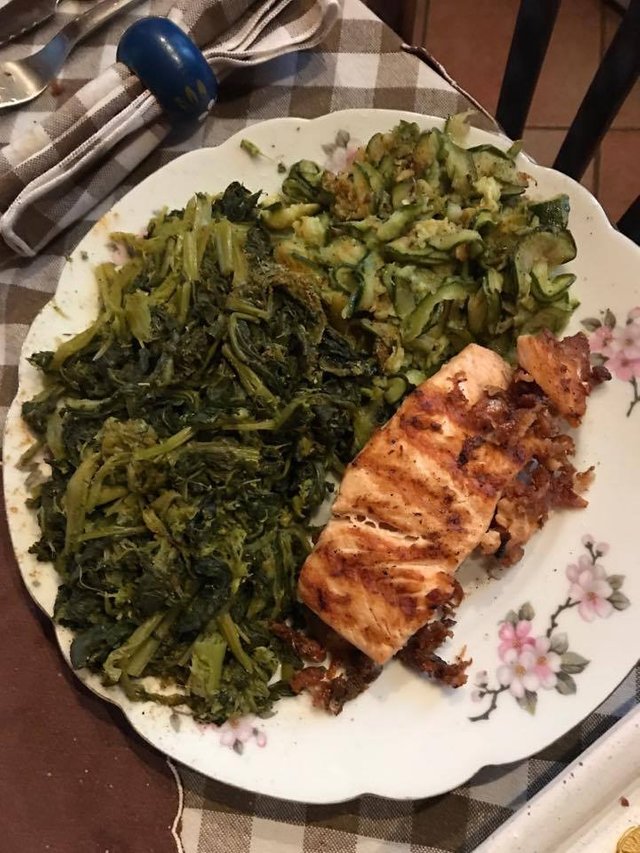
Boiled Beef With Turnip Greens, Vinegar, Curcumin, Black Pepper and Italian Herbs.
Ingredients
Beef, plate, lean only, cooked: 200 grams Turnip greens, cooked 270 gramsMacros
Protein: 56 grams Net Carbs: 2.3 grams Fat: 21 grams Kcal: 422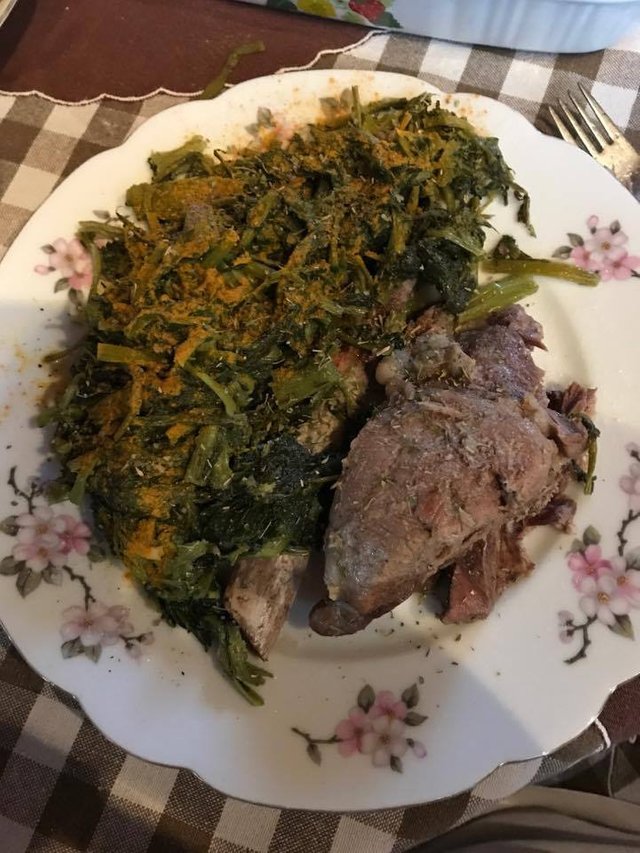
Sauteed Lean Beef Slices With Fried Quail Eggs, Turnip Greens, Curcumin, Black Pepper, Italian Herbs and Apple Cider Vinegar.
Ingredients
Beef eye of round lean only raw: 130 grams Egg, quail, raw: 4 whole eggs Turnip greens cooked: 380 gramsMacros
Protein: 37 grams Net Carbs: 3.4 grams Fat: 8 grams Kcal: 284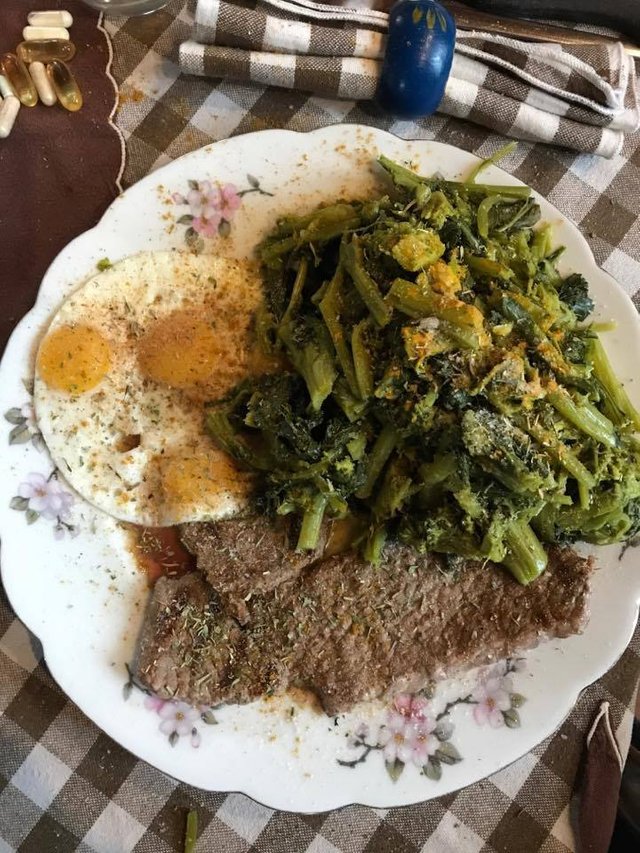
Conclusions
Here you can see how turnip greens could be a great versatile addition to your diet.
They provide a softer taste compared to spinach, but a < crunchier texture because of the higher fiber content. You could easily alternate them with spinach and other leafy green vegetables with your favorite sources of animal protein!
However, athletes who want to take in a large dose of nitrates for supporting their workout session should consume between 6.5 and 13 mg of dietary nitrate per Kg of body weight two hours before in an easily digestible source [9][2]. This is what makes beetroot juice so practical.
I dare you to eat 500g of cooked spinach or turnip greens one or two hours before a heavy resistance training session.
In the upcoming part of this article, I will explore some practical solutions (aka smoothies) for fueling yourself with dietary nitrates before your workout. Blending your vegetables indeed enhances dietary nitrate availability[2].
In the meantime, please, obey to your mom and eat your green veggies! They're good for your circulatory system!
TL;DR:
- Dietary nitrates enhance blood flow, muscle recovery, energy output, aerobic resistance and ATP production.
- There's no available supplementation for dietary nitrates. You have to eat your greens!
- Cooking your vegetables do not reduce nitrates availability.
- For enhancing your physical performance, you should take between 6,5 and 13 mg of dietary nitrate per Kg of body weight two hours prior your workout session.
- Blending your green veggies enhance dietary nitrate availability.
- You should cook and drain oxalate-rich greens (spinach) for preventing kidney stones formation.
- The best sources of dietary nitrates are, in order of content: arugula, turnip greens, beetroot, spinach.
-I'm not a medical doctor. Please consult your physician before attempting any of the things described in this post. Even more so if you have thyroid-related issues.-
If you're interested in personal fitness coaching, reach me at [email protected]
Congratulations @l4z0r! You received a personal award!
You can view your badges on your Steem Board and compare to others on the Steem Ranking
Vote for @Steemitboard as a witness to get one more award and increased upvotes!